Portal for more climate-friendly mobility

Green hydrogen – what next?
Hydrogen and renewable gases are crucial for the energy transition. But what about a strategy for this? What are the next steps with regard to green hydrogen and what alternatives are available? The 3rd Power-to-Gas Congress Switzerland aims to provide answers to these questions, because in the rest of Europe, plans are being diligently made or even already implemented – as with the expansion of biogas, it is also important to keep pace here.
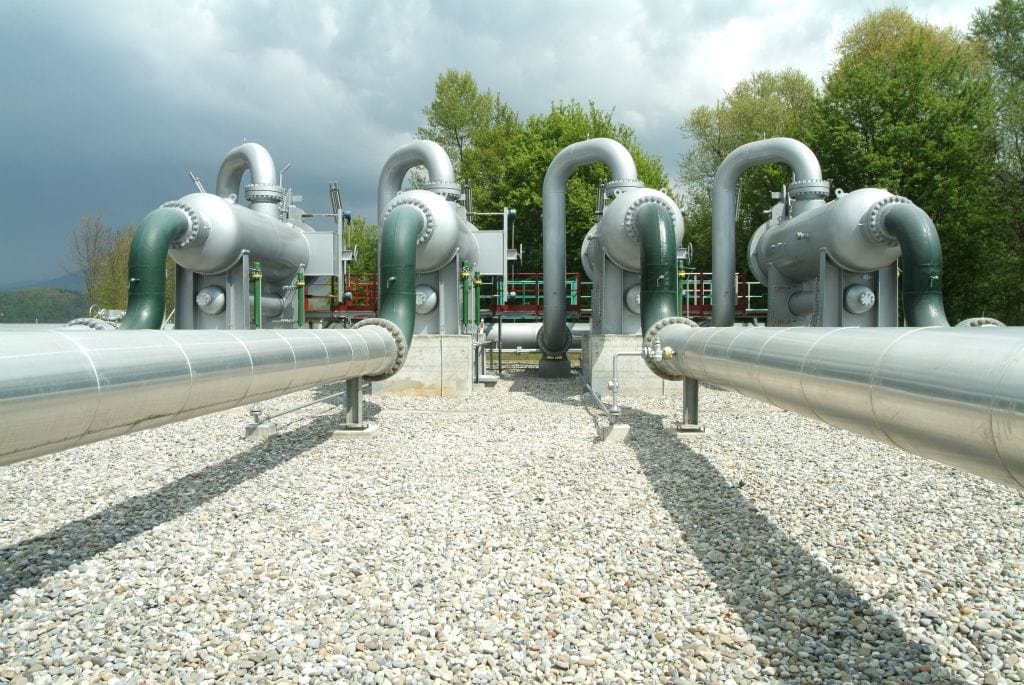 Not only is the production of and the network for biogas being expanded throughout Europe, but the network for the transport of hydrogen is also to become gradually more closely meshed. Source: GIE
Not only is the production of and the network for biogas being expanded throughout Europe, but the network for the transport of hydrogen is also to become gradually more closely meshed. Source: GIE
The use of hydrogen, as here in Germany for mobility, among other things, is being pushed throughout EuropeOur neighbouring countries are working diligently on hydrogen strategies, which are intended to dovetail climate, energy, industrial and innovation policies. In Germany, the government even declared in 2020: “The goal is to make Germany a global pioneer in green hydrogen and to achieve and secure market leadership in hydrogen technologies in the long term. Hydrogen, just like biogas and other renewable gases, is crucial to achieving the goal of net zero by 2050.
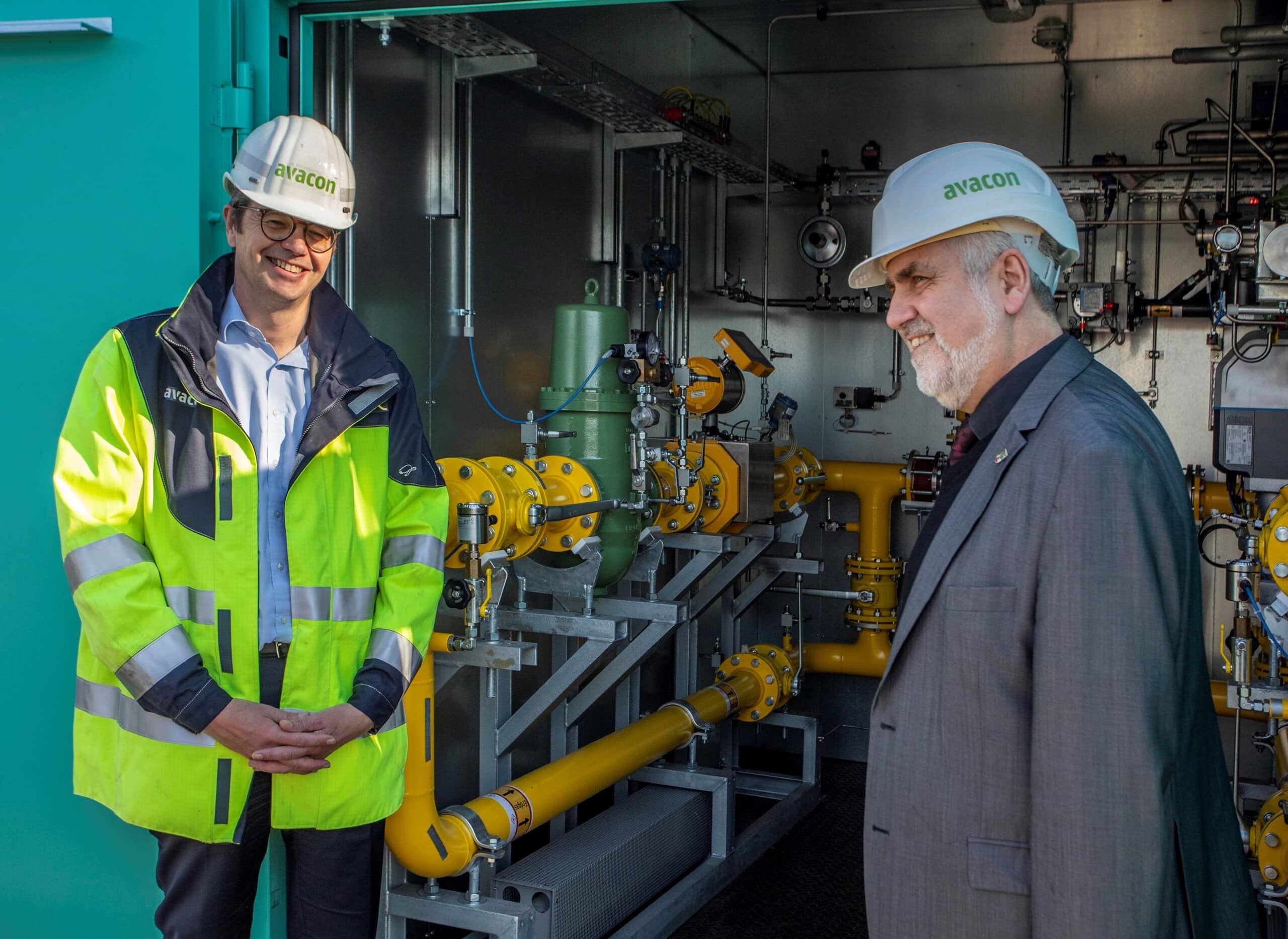 Saxony-Anhalt’s Minister of the Environment Armin Willingmann and Avacon Netz Managing Director Frank Schwermer at the starting shot for 20 percent hydrogen admixture in a trial section. Source: Avacon
Saxony-Anhalt’s Minister of the Environment Armin Willingmann and Avacon Netz Managing Director Frank Schwermer at the starting shot for 20 percent hydrogen admixture in a trial section. Source: Avacon
In Germany, plans are already being concretised in certain regions to link potential users of green hydrogen and their future demand as well as the generation potential for green electricity with the concrete construction and transformation of the grid required for this. For the energy transition and climate neutrality, we need green hydrogen – precisely because we are and want to remain an energy and industrial region,” explains Wolfram Günther, Minister of State for Energy, Climate Protection, Environment and Agriculture in Saxony. “That is why we are building a hydrogen economy in which the gas is produced, transported, stored and used.”
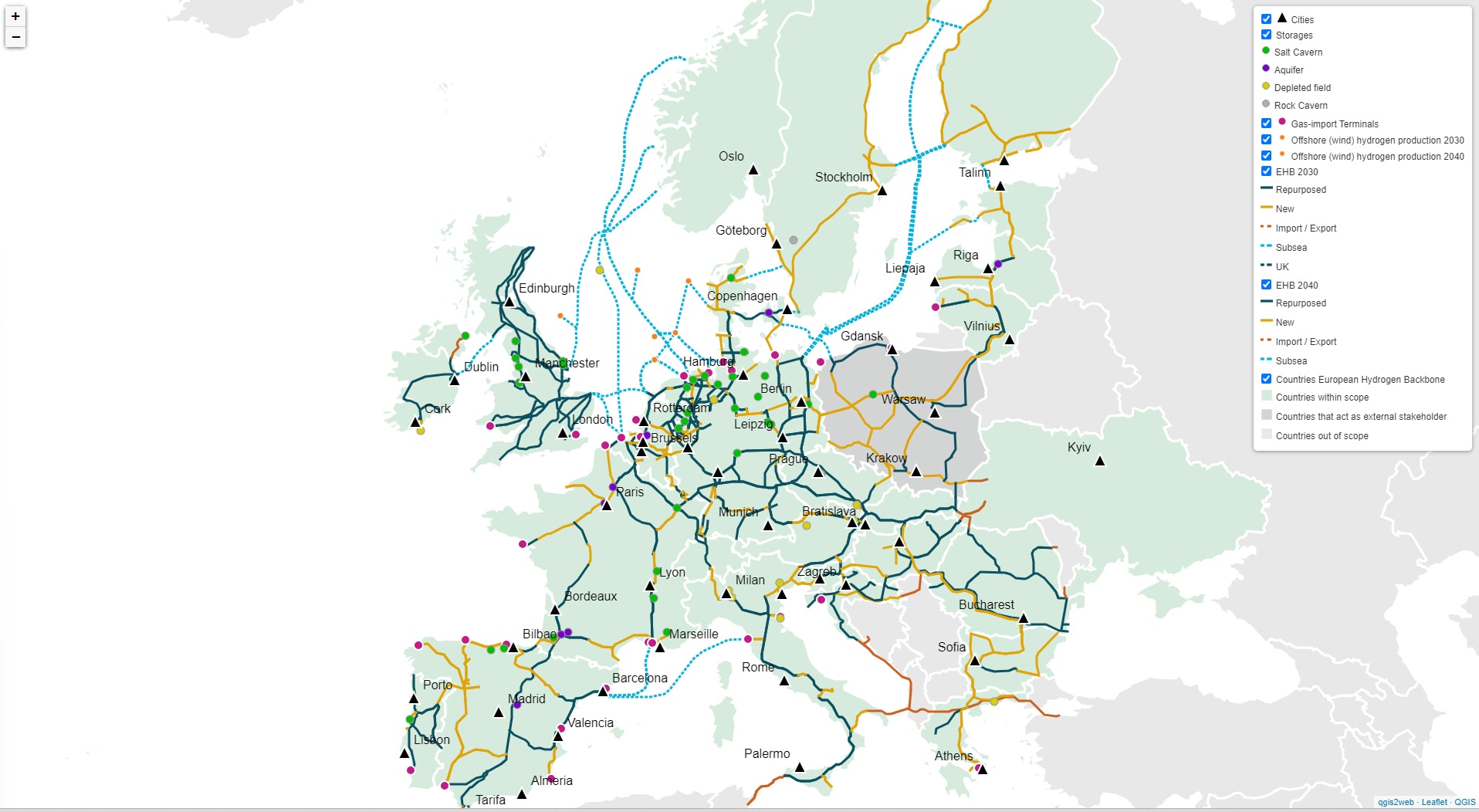 The plans for the European hydrogen network according to the European Hydrogen Backbone initiative. Source: EHB
The plans for the European hydrogen network according to the European Hydrogen Backbone initiative. Source: EHB
Since its creation in 2020, the European Hydrogen Backbone (EHB) initiative, which now has 32 members from 28 countries, also aims to contribute to the development of a European hydrogen market and the expansion of the network connecting countries across Europe, thus making its contribution to a sustainable and affordable energy supply. In April 2022, the network already covered 27,986 kilometres, of which about half were converted gas pipelines. The rapid development of the network can best be followed on the interactive map or on the Entsorg-Transparency platform.
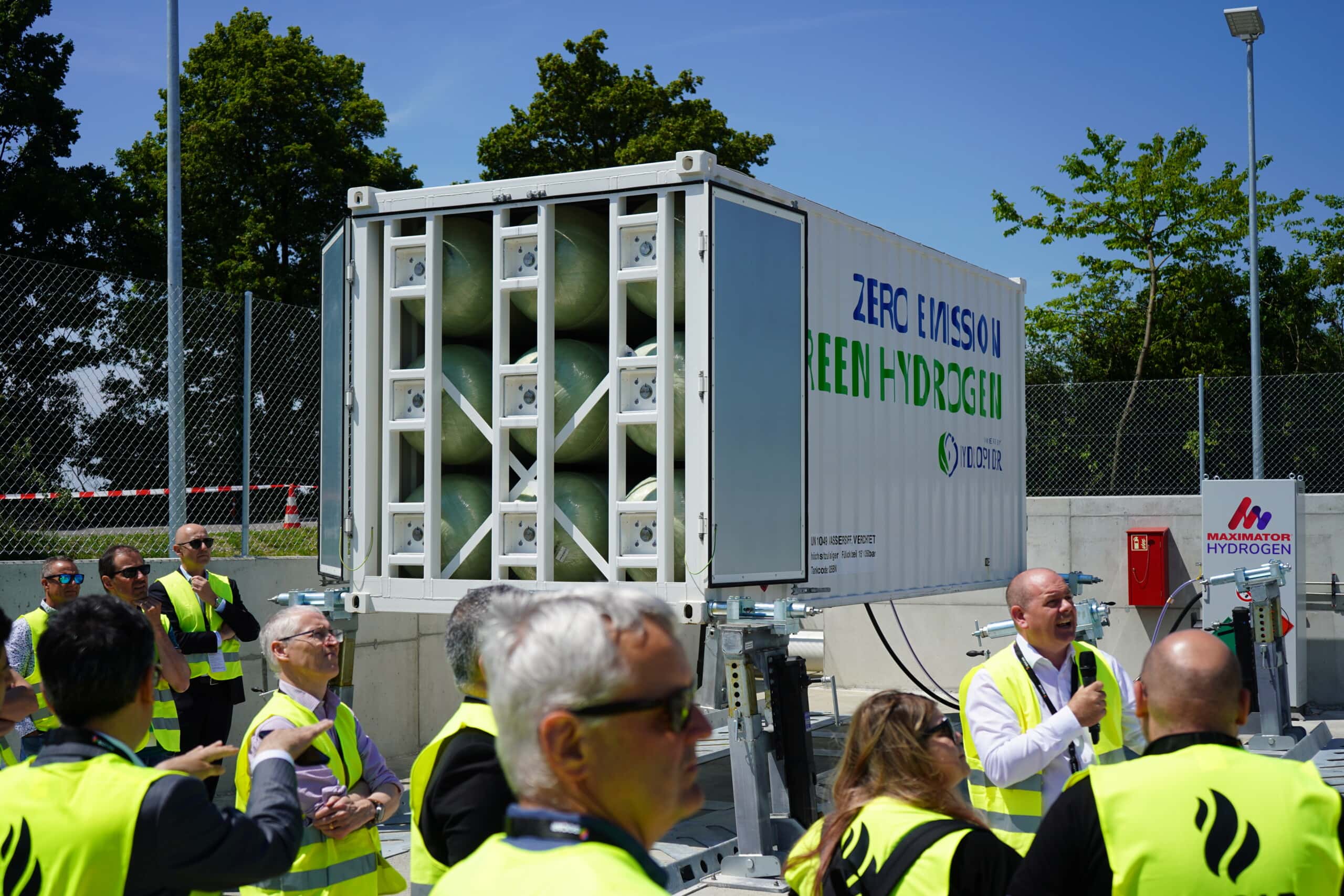 Green hydrogen from Hydrospider is used in Switzerland, among other things, to supply the H2 filling station network, as here in Grauholz, with energy for Hyundai’s fuel cell trucks. Source: CNG-Mobility.ch
Green hydrogen from Hydrospider is used in Switzerland, among other things, to supply the H2 filling station network, as here in Grauholz, with energy for Hyundai’s fuel cell trucks. Source: CNG-Mobility.ch
Unlike in nearby countries or hydrogen pioneer nations such as Norway, Switzerland has so far lacked a national strategy – just as with biogas, by the way. According to the Energy Perspectives 2050+, green hydrogen should also play an important role in the energy transition in this country, especially in sectors that are difficult to decarbonise and as a storage solution. Unlike the Electromobility Roadmap, which has already been setting a national direction and clarifying framework conditions since 2018, this is still lacking for hydrogen and renewable gas.
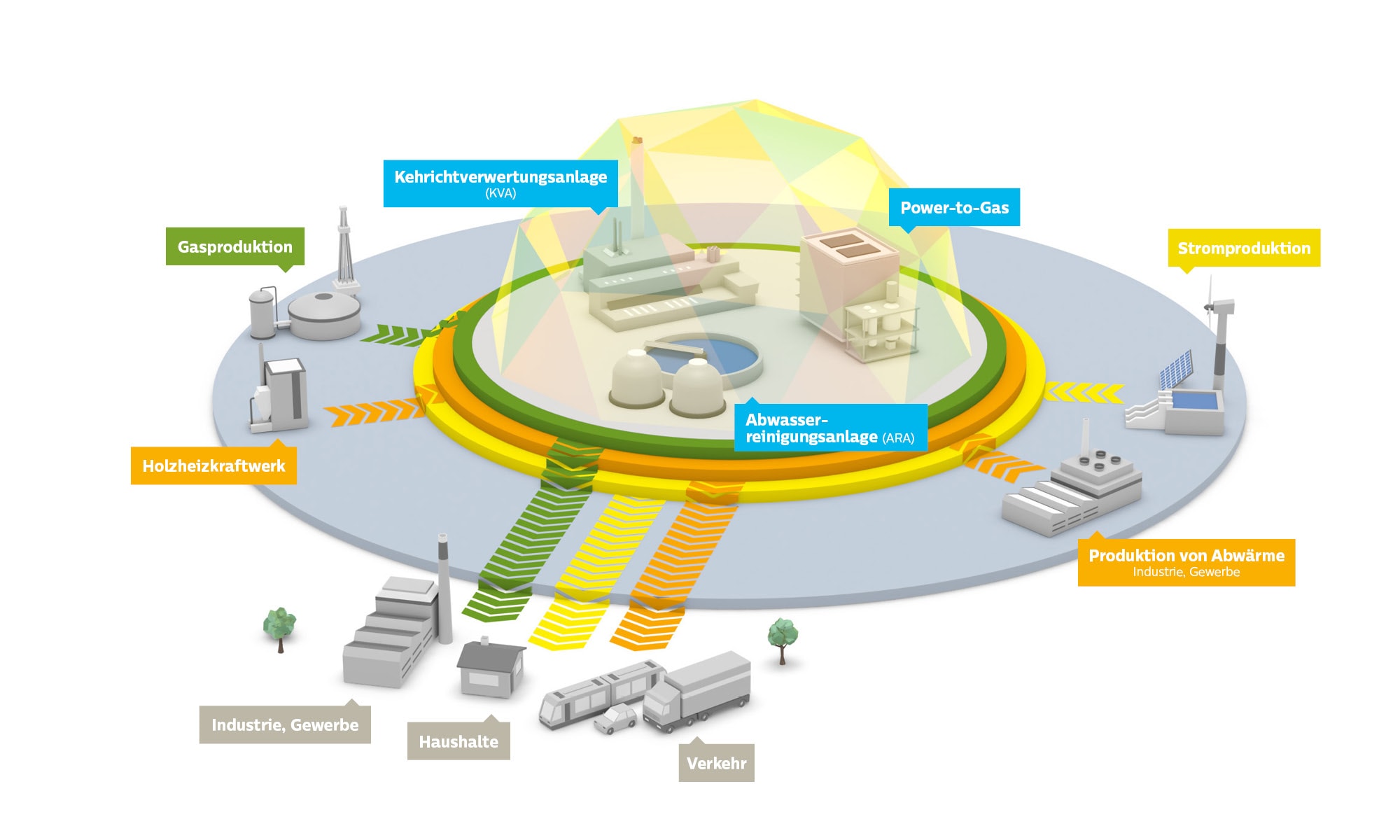 The new multi-energy hub with Limeco’s power-to-gas plant, which will continue to supply the Limmat Valley with sustainable energy in the future. Source: Limeco
The new multi-energy hub with Limeco’s power-to-gas plant, which will continue to supply the Limmat Valley with sustainable energy in the future. Source: Limeco
Power-to-gas technology, which converts electric power into storable hydrogen (H2) or synthetic methane (CH4), for example, has long since left the research stage and is functioning, as demonstrated, for example, by Switzerland’s first industrial power-to-gas plant at the Limmattal regional plant Limeco. A year ago, Daniela Decurtins, Director of the Swiss Gas Industry Association (VSG), made it clear at the 2nd Power-to-Gas Congress: “Technologies such as power-to-gas offer great potential for a sustainable and climate-neutral energy supply, in that electricity from renewable sources can be stored seasonally in the gas grid. It is important to have a proof of origin for green hydrogen as well as a verification system so that a market ramp-up can take place and the green hydrogen can be traded as renewable.”
 The trinational initiative “3H2” was founded in 2022 and aims to strengthen the business location in the Basel region beyond the national borders. Source: 3H2
The trinational initiative “3H2” was founded in 2022 and aims to strengthen the business location in the Basel region beyond the national borders. Source: 3H2
Hydrogen produced from renewable energy sources, like biogas and other renewable gases, can replace fossil energy sources – in the transport sector as well as in industry as process energy and raw material. The Basel Chamber of Commerce, IWB and the Climate Platform of the Basel Region Economy are also convinced of this, which is why they founded the trinational “3H2” initiative in summer 2022 with other partners from Germany and France in order to strengthen the business location.
 At the second Power-to-Gas Congress 2022, experts and politicians agreed: green hydrogen will play a role for energy supply or as a storage solution. But what will that look like in 2023? Source: CNG-Mobility.ch
At the second Power-to-Gas Congress 2022, experts and politicians agreed: green hydrogen will play a role for energy supply or as a storage solution. But what will that look like in 2023? Source: CNG-Mobility.ch
What else is currently happening in Switzerland in the field of renewable gases, what role hydrogen will play in the future energy system, what the potential and hurdles are for hydrogen & Co, will be the subject of the 3rd Power-to-Gas Congress Switzerland. On 5 September, promising projects and innovations from Europe and Switzerland, such as the Wunsiedel Energy Park, the storage of surplus electricity in biomethane and the development of the “GanyMeth methane reactor” as well as green hydrogen from wood in the Jura, will also be discussed. An update on import and transit routes in and through Switzerland is also provided. (pd/jas, 27 July 2023)
More information on the Power-to-Gas Congress 2023 is available here.
You might also be interested in
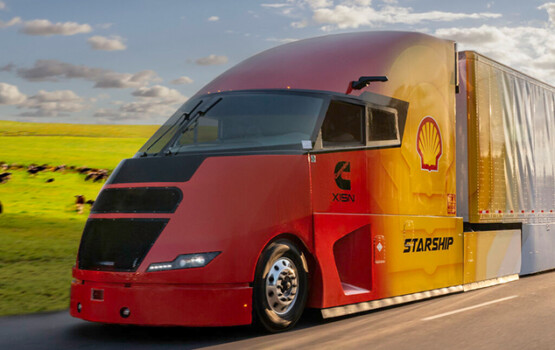
Shell Starship on record hunt
